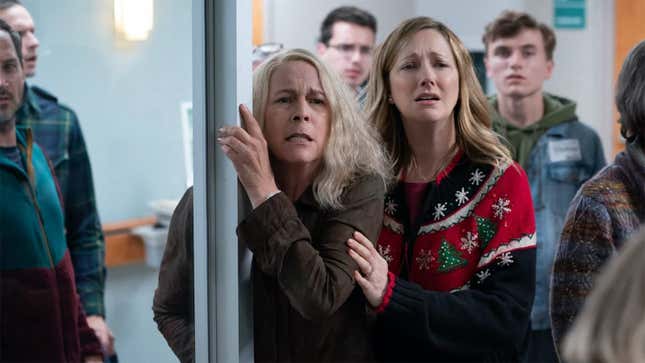The Gross Hypocrisy of Halloween Kills
The bloodiest, most brutal entry in the long-running franchise is...actually about collective trauma? Pfft.
EntertainmentMovies

If we were at a party and I told you all the heinous ways that death is depicted in Halloween Kills, you’d probably walk away from me. I can only assume you’d stop reading if I did the same in this space. The latest and 12th (12th!) Halloween movie manages to distinguish itself as the most brutal entry in a franchise synonymous with brutality. Not since the Saw movies were grinding out on an annual basis has mass entertainment reveled in gore so gratuitously.
The piling bodies (with various holes in various places made with various instruments, including bare hands) combined with over-the-top performances and the depiction of the frenzy that erupts in a besieged town when its citizens decide to fight back against their boogeyman—the whole thing felt so operatic that I had to laugh just to relieve tension. This movie is, by any rational standard, several different kinds of ridiculous. Blood gushes with the severity of hardcore early ‘80s Italian horror. The villain here, Michael Myers, is such an unstoppable killing machine that after beating one character’s body several times on a floor adjacent to a staircase, he cannot resist snapping the neck upon his descent out of the house, like a cat reflexively pushing a glass off a table. When you’re hot you’re hot.
-

-

-

-

-

-

-

-

-

-

-

-

-

-

-

-

-

-

-

-

-

-

-

-

-

-

-

-

-

-

-

-

-

-

-

-

-

-

-

-








































